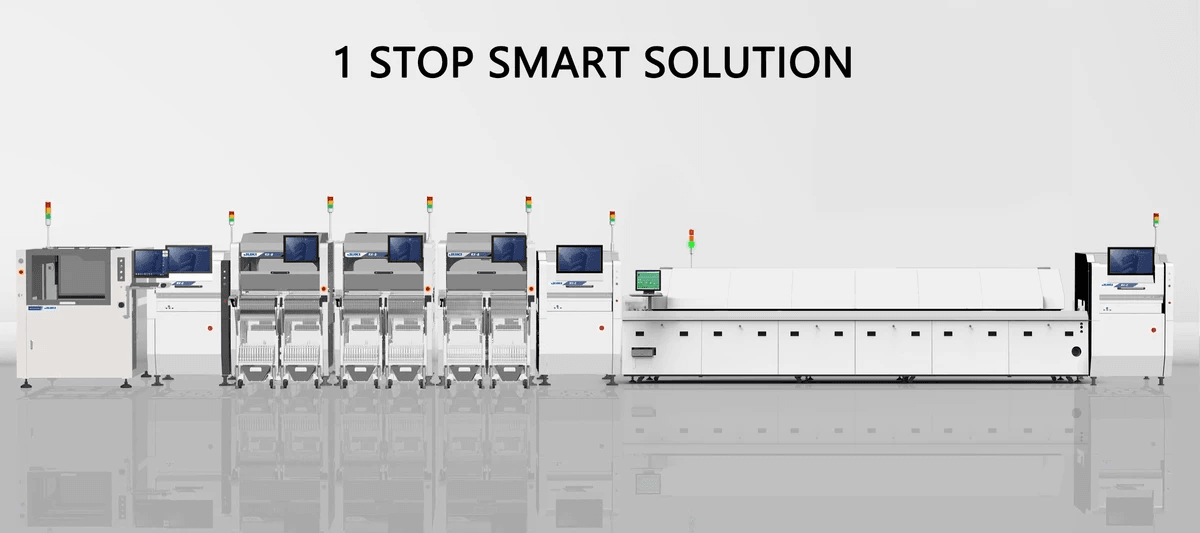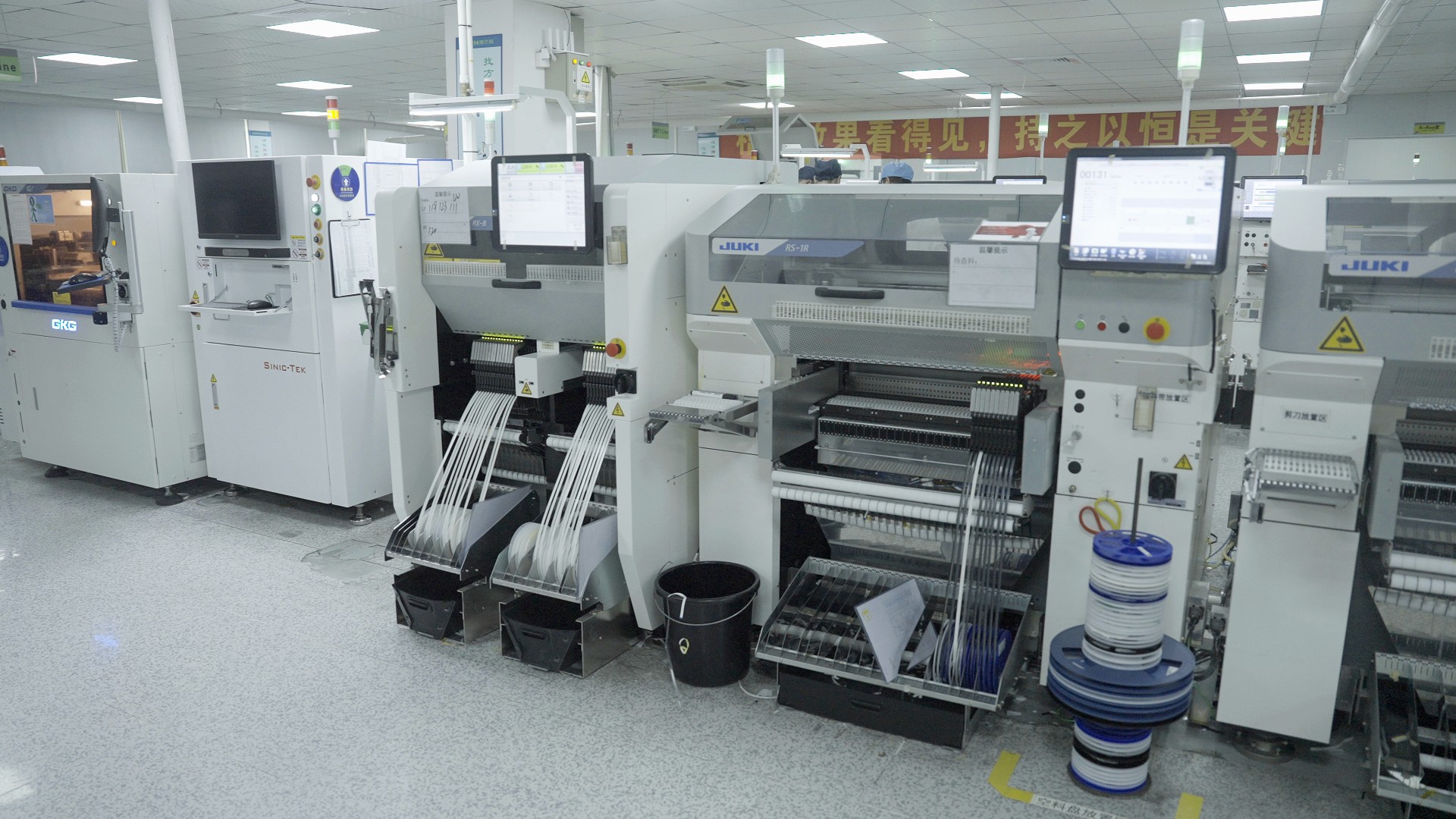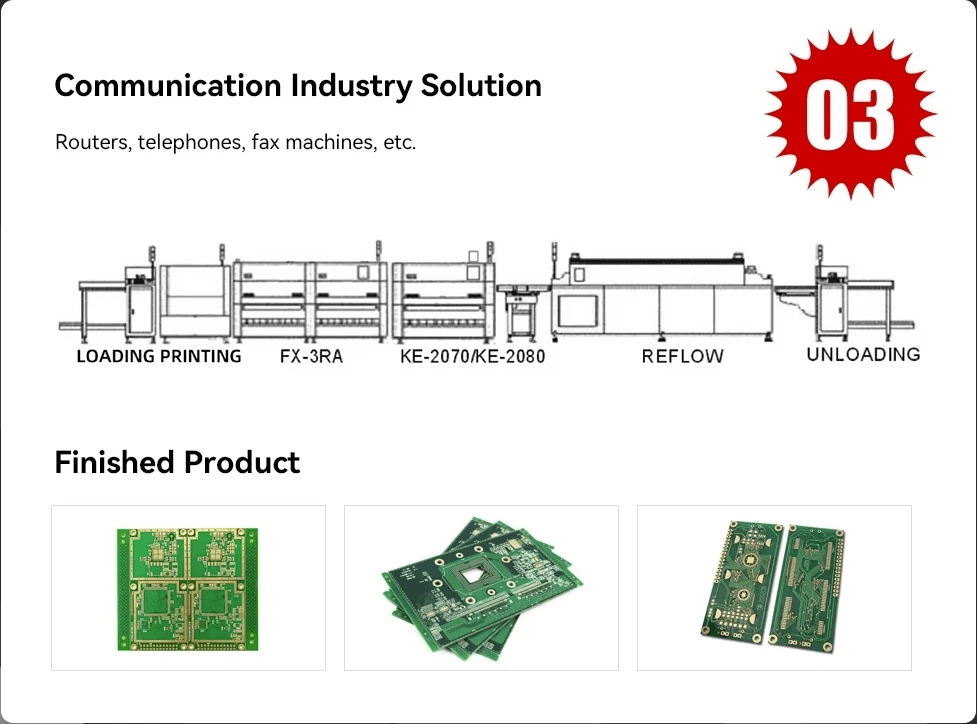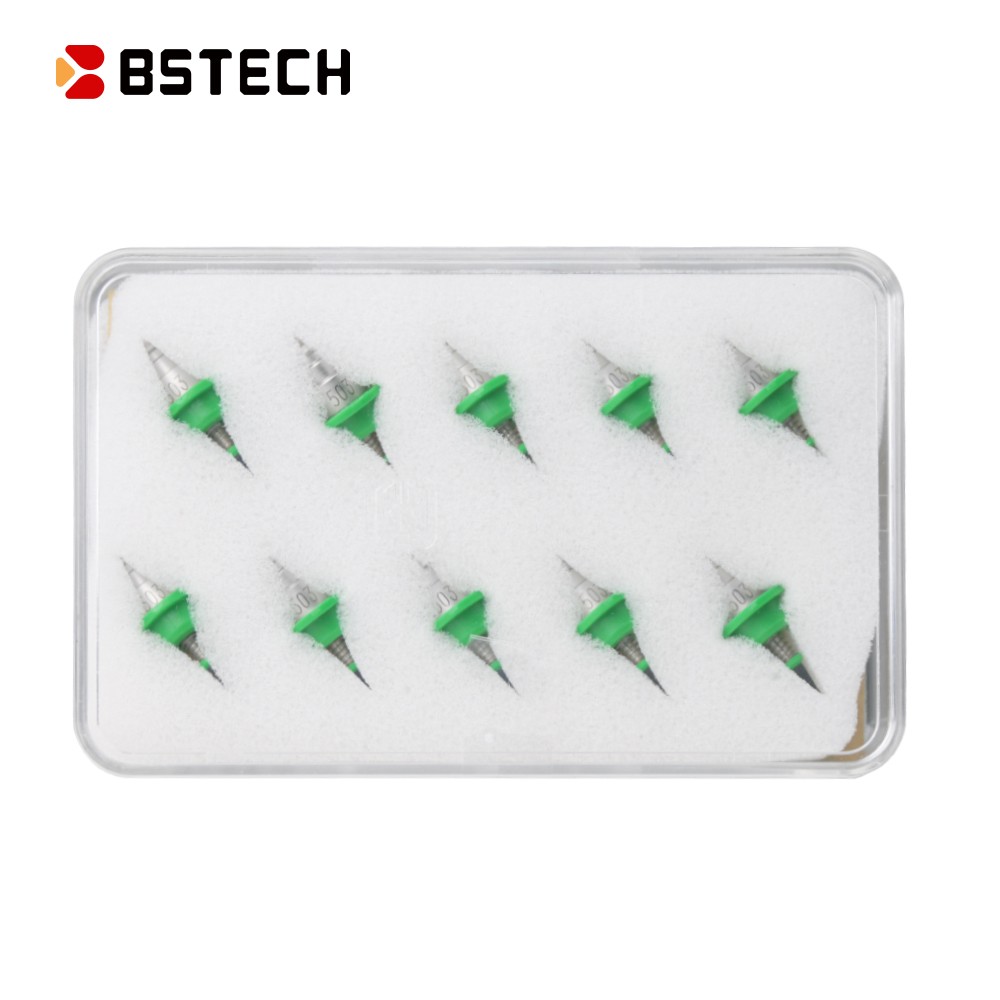Introduction

In the fast-paced world of electronics, the efficiency and precision of soldering processes can make or break a product. Wave solder machines have emerged as a pivotal solution in this domain, streamlining the intricate task of PCB soldering. By understanding these machines and their advantages, manufacturers can enhance production quality and reduce costs.
Understanding Wave Solder Machines
Wave solder machines are specialized devices designed to automate the process of soldering electronic components onto printed circuit boards (PCBs). They utilize a wave of molten solder to create strong, reliable connections between components and the board itself. This method is particularly advantageous for high-volume production runs where consistency and speed are paramount.
The Role of PCB Soldering in Electronics
PCB soldering serves as the backbone of electronic assembly, ensuring that various components function together seamlessly within devices. It involves several techniques that vary in complexity and application; among these are wave soldering, reflow soldering, and selective soldering. Each method plays a crucial role in building reliable electronics that meet consumer demands for performance and durability.
Advantages of Using Wave Solder Machines
The use of wave solder machines offers numerous benefits over traditional manual methods or even other types of PCB soldering techniques. These machines provide exceptional speed, allowing for mass production without compromising quality; they also minimize human error through automation. Additionally, wave solder machines can handle complex PCBs with multiple layers or diverse component types more effectively than manual alternatives.
An Overview of PCB Soldering Machines

In the world of electronics, a PCB soldering machine is an essential tool that facilitates the assembly of printed circuit boards (PCBs). These machines automate the process of applying solder to electronic components, ensuring strong connections and enhancing efficiency. With various types of PCB soldering techniques available, understanding how these machines work can significantly improve your production capabilities.
What Is a PCB Soldering Machine?
A PCB soldering machine is specifically designed to join electronic components to a printed circuit board using solder. This equipment can vary in complexity from simple manual devices to advanced automated systems that handle large-scale production. By utilizing different types of PCB soldering techniques, such as wave or reflow soldering, these machines cater to diverse manufacturing needs and preferences.
The primary function of a PCB soldering machine is to melt solder and apply it precisely where needed on the board. This process not only ensures reliable electrical connections but also minimizes defects that could arise from manual processes. As technology evolves, modern machines incorporate features that enhance control over temperature and timing, making them indispensable in any electronics workshop.
Key Components of Wave Solder Machines
Wave solder machines are among the most popular types of PCB soldering equipment used in high-volume manufacturing environments. The key components include a preheating section, a wave nozzle for applying molten solder, and a cooling section for solidifying the connections made during the process. Each component plays a crucial role in ensuring effective heat transfer and optimal joint quality.
The preheating section warms up the PCB before it encounters molten solder, allowing for better adhesion and reducing thermal shock on sensitive components. The wave nozzle creates a continuous flow of molten solder that comes into contact with exposed leads on PCBs, forming strong connections rapidly and efficiently. Finally, the cooling section ensures that joints solidify uniformly without introducing stress fractures or other defects.
Understanding these key components helps users appreciate how wave solder machines streamline production while maintaining high-quality standards in electronics assembly. Whether you're working with complex multilayer boards or simpler designs, knowing how each part functions can aid in troubleshooting issues should they arise during operation.
Top Brands in the Market
When considering investment in PCB soldering equipment like wave solder machines, it's essential to know which brands stand out in terms of reliability and performance. Companies such as Kester, Speedline Technologies, and Heller Industries have established themselves as leaders by consistently delivering innovative solutions tailored for various manufacturing needs.
Kester is renowned for its high-quality PCB soldering paste products as well as its commitment to research and development within the industry. Speedline Technologies offers advanced machinery equipped with cutting-edge technology designed for efficient production lines while ensuring excellent quality control measures are met at every step. Heller Industries specializes in reflow ovens but also provides robust solutions for wave solder applications—making them versatile players in this market segment.
Choosing reputable brands not only guarantees access to superior equipment but also provides ongoing support through warranties and service options—thus enhancing your overall experience with your new pcb soldering machine setup.
Types of PCB Soldering Techniques

When it comes to soldering printed circuit boards (PCBs), various techniques can be employed, each with its own unique advantages and applications. Understanding these different types of PCB soldering is essential for achieving optimal results in your electronic projects. In this section, we will explore wave soldering, reflow soldering, selective soldering, and the merits of manual techniques.
Wave Soldering vs. Reflow Soldering
Wave soldering and reflow soldering are two primary methods used in PCB assembly. Wave soldering involves passing a PCB over a wave of molten solder, which adheres to the exposed metal pads on the board. On the other hand, reflow soldering heats the entire assembly to melt pre-applied solder paste before cooling it to form solid joints; this technique is particularly popular for surface-mounted devices (SMDs).
The choice between these two methods often depends on the specific requirements of a project and the type of components being used. For instance, wave soldering is generally more efficient for through-hole components in high-volume production settings where speed is crucial. Meanwhile, reflow offers better control over temperature profiles and is ideal for intricate designs with mixed component types.
Selective Soldering Explained
Selective soldering is a hybrid technique that combines elements from both wave and manual processes to target specific areas on a PCB without affecting surrounding components. This method uses a specialized PCB soldering machine that directs molten solder precisely where it's needed—ideal for complex boards with densely packed components or sensitive areas that require careful handling.
One significant advantage of selective soldering is its ability to accommodate both through-hole and surface mount technologies within a single workflow without requiring extensive setup changes. This flexibility can save time and reduce waste when assembling diverse product lines or prototypes. Furthermore, selective systems often provide superior joint quality due to their focused application of heat and material.
Advantages of Manual Soldering Techniques
While automated methods like wave or selective soldering are prevalent in large-scale production environments, manual techniques still hold an important place in PCB assembly—especially for hobbyists or small batch productions using a basic PCB Soldering Kit. Manual techniques allow for greater precision and control when working with delicate components or intricate designs that may not be suited for mass production machines.
Additionally, manual PCB soldering provides an opportunity for hands-on learning about electronics assembly—a valuable experience for beginners looking to enhance their skills with various types of PCB equipment. It also allows technicians to quickly address issues such as component misalignment or defects during assembly without needing complex machinery adjustments.
In conclusion, understanding these different types of PCB soldering techniques will equip you with the knowledge necessary to choose the right approach based on your project needs—whether you opt for automation or embrace traditional methods.
Choosing the Right PCB Soldering Equipment
Selecting the right PCB soldering equipment is crucial for achieving high-quality solder joints and efficient production. With various types of PCB soldering techniques available, including wave soldering and reflow soldering, your choice will depend on your specific needs and budget. Additionally, understanding the components of a PCB soldering machine can help you make an informed decision.
Factors to Consider When Selecting Equipment
When choosing a PCB soldering machine, consider factors such as the volume of production, the complexity of your projects, and the types of PCB soldering paste you plan to use. It's also essential to evaluate the machine's compatibility with different types of PCB materials and components. Lastly, think about ease of use and maintenance; after all, no one wants a complicated setup that requires an engineering degree to operate!
Bensun Technology Co., Ltd. Offerings
Bensun Technology Co., Ltd. provides a variety of high-quality PCB soldering equipment designed to meet diverse industry needs. Their product line includes advanced wave solder machines that offer precision and efficiency in large-scale manufacturing environments. Additionally, they offer comprehensive support for selecting the right tools for your specific applications within the realm of different types of PCB soldering techniques.
Essential Features in Modern Soldering Machines
Modern PCB soldering machines come equipped with features that enhance usability and performance significantly. Look for machines with programmable settings that allow you to customize temperature profiles based on different types of PCB materials or specific applications involving various kinds of PCB soldering paste. Moreover, consider machines with integrated inspection systems that help ensure quality control throughout your assembly process.
Understanding PCB Soldering Paste

PCB soldering paste is a crucial component in the world of electronics, particularly when using a PCB soldering machine. This paste, which combines solder and flux, facilitates the joining of electronic components to printed circuit boards (PCBs). Understanding its composition and application can significantly enhance your soldering techniques and overall efficiency.
What Is PCB Soldering Paste?
At its core, PCB soldering paste is a mixture of tiny metal particles, usually tin-lead or lead-free alloys, combined with flux. This concoction is applied to the pads on a PCB before components are placed for soldering. Once heat is applied—whether through wave soldering or reflow methods—the paste melts and solidifies to create strong electrical connections.
The use of PCB soldering paste is essential for various types of PCB soldering techniques, especially in automated processes like reflow and selective soldering. It ensures uniform coverage on the pads and helps in preventing oxidation during the heating process. Proper application can make all the difference between a successful assembly and one fraught with issues.
Different Types of Soldering Paste Available
There are several types of PCB soldering paste available on the market today, each tailored for specific applications or requirements. The most common varieties include lead-based pastes, which offer excellent wetting properties but come with environmental concerns due to lead content; and lead-free pastes, which have gained popularity due to regulatory standards but may require higher temperatures for optimal performance.
Other variations include no-clean pastes that leave minimal residue after heating—ideal for quick assembly processes—and water-soluble pastes that require cleaning post-soldering but provide better reliability in certain conditions. Choosing the right type of paste can greatly affect your choice of PCB soldering equipment as well as your overall project outcome.
Best Practices for Using Soldering Paste
To maximize the effectiveness of your PCB soldering kit when working with solder paste, adhering to best practices is essential. First off, ensure that you store your paste correctly; it should be kept refrigerated if possible to prolong its shelf life and maintain its viscosity.
When applying the paste onto your PCBs, consistency is key—use stencils or syringing techniques to achieve even distribution on each pad without excessive buildup. Finally, always remember to inspect your work before proceeding with any heating method; this will help catch any mistakes early on that could compromise your entire assembly process.
Building Your PCB Soldering Kit

Creating your own PCB soldering kit is an exciting step for any electronics enthusiast. A well-equipped kit not only enhances your efficiency but also ensures that you are prepared for various types of PCB soldering techniques. Whether you're a beginner or a seasoned pro, having the right PCB soldering equipment can make all the difference in achieving high-quality results.
Essential Tools for Every PCB Project
When embarking on any PCB project, certain tools are indispensable. First and foremost, a reliable PCB soldering machine is crucial; it allows you to apply heat and solder efficiently to create strong connections. Additionally, having a quality soldering iron, wire cutters, tweezers, and a multimeter ensures you can handle every aspect of your project with ease.
Don’t overlook the importance of accessories such as flux pens and different types of PCB soldering paste; these will aid in achieving clean and effective joints. Moreover, investing in a good quality desoldering pump can save you time when corrections are needed. With these essential tools at your disposal, you'll be ready to tackle any challenge that comes your way.
Recommended Equipment for Beginners
For those just starting out in the world of electronics, it's wise to keep things simple yet effective when selecting your initial equipment. A basic starter kit should include an entry-level PCB soldering machine that offers adjustable temperature settings—this feature is vital as different types of PCB soldering require varying heat levels.
Alongside your soldering machine, consider acquiring lead-free solder and some essential hand tools like wire strippers and precision pliers to navigate through intricate projects easily. Many beginners also find it helpful to have access to instructional materials or online tutorials that cover various PCB soldering techniques—this knowledge will boost confidence as you experiment with different projects.
Upgrading Your Soldering Kit Over Time
As you gain experience and tackle more complex projects, upgrading your PCB Soldering Kit becomes essential for maintaining efficiency and quality in your work. Investing in advanced features such as programmable temperature profiles on your pcb soldering machine can significantly enhance precision during delicate tasks or when working with sensitive components.
You may also want to explore specialized tools like hot air rework stations or selective solder machines if you're dealing with multi-layered boards or intricate designs frequently found in modern electronics manufacturing processes. As technology evolves, staying informed about new trends in equipment will help ensure that your skills remain sharp while maximizing productivity through improved techniques.
Conclusion
In the fast-paced world of electronics, investing in a wave solder machine can significantly enhance production efficiency and quality. These machines not only streamline the soldering process but also ensure uniformity across multiple PCB assemblies. As technology continues to evolve, staying ahead with reliable PCB soldering equipment becomes crucial for any manufacturer looking to maintain a competitive edge.
Why Invest in Wave Solder Machines
Wave solder machines are designed to handle high-volume production runs with unmatched precision. By automating the soldering process, they reduce human error and increase throughput, making them an essential piece of PCB soldering equipment for any serious operation. Additionally, their ability to accommodate various types of PCB soldering techniques allows manufacturers to adapt quickly to changing project requirements.
The Future of PCB Soldering Techniques
As we look ahead, the landscape of PCB soldering techniques is poised for innovation driven by advancements in automation and materials science. New methods such as selective soldering are gaining traction due to their efficiency and adaptability for complex designs. Furthermore, developments in PCB soldering paste formulations promise improved performance and reliability, ensuring that future products meet ever-increasing quality standards.
Tips for Maximizing Your Soldering Efficiency
To maximize your efficiency when using a pcb soldering machine or any other type of equipment, it's essential to keep your workspace organized and maintain your tools regularly. Investing in a comprehensive PCB Soldering Kit can also provide you with all the necessary tools at your fingertips, making it easier to tackle any project that comes your way. Lastly, understanding the specific characteristics of different types of PCB soldering will empower you to choose the right techniques and materials for each job.
